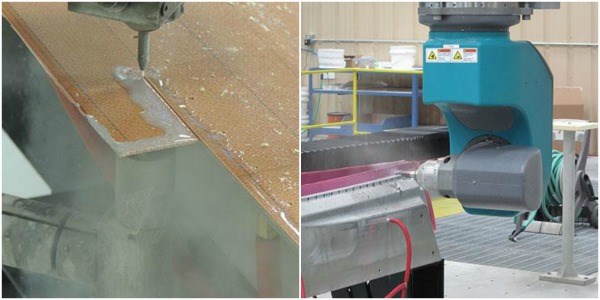When to Waterjet, When to Mill
A composite parts manufacturer in Nebraska recently installed a combined five-axis waterjet/milling machine to position itself to win large-scale aerospace work it sees on the horizon.
Share







This Composites Machining Cell enables Royal Composites to perform both five-axis waterjet and milling operations for large aerospace components.
Abrasive waterjet machines offer distinct advantages for trimming composite materials. For example, waterjet machining has inherently low cutting forces, so fixtures need not be as bulky as those required for conventional milling operations. Plus, garnet abrasive media serve as a waterjet stream’s “cutting edges,” and fresh media are continually introduced into the stream. Therefore, the stream’s cutting edges are always sharp, whereas conventional routing and drill bits can wear, possibly resulting in delamination or burred edge finishes. However, in some cases, milling is the only viable machining process due to fixturing interference or other issues.
In this story, learn how will use a machine that features both five-axis waterjet and milling capabilities to perform both of those operations as it goes after large-scale aerospace work.
Related Content
-
How to Determine the Currently Active Work Offset Number
Determining the currently active work offset number is practical when the program zero point is changing between workpieces in a production run.
-
6 Variations That Kill Productivity
The act of qualifying CNC programs is largely related to eliminating variations, which can be a daunting task when you consider how many things can change from one time a job is run to the next.
-
Custom Workholding Principles to Live By
Workholding solutions can take on infinite forms and all would be correct to some degree. Follow these tips to help optimize custom workholding solutions.












